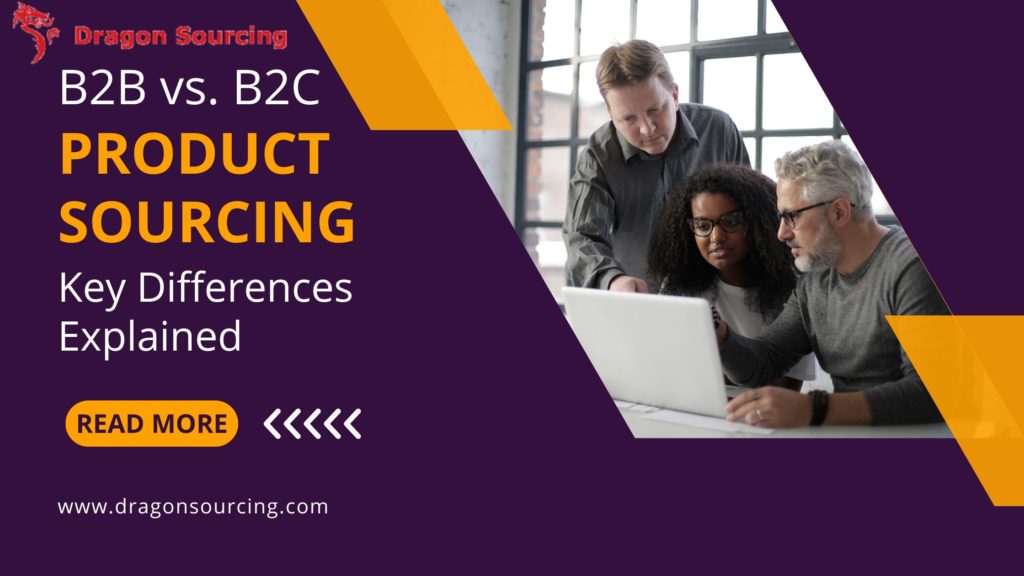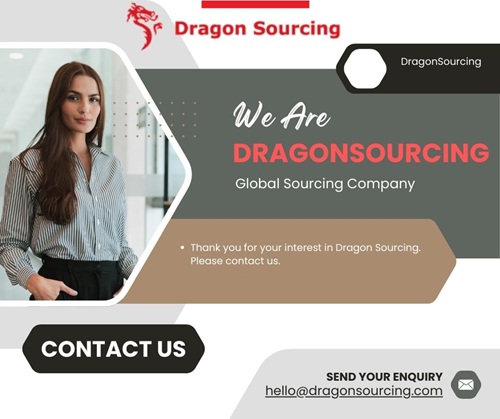
Synopsis:
- Defines B2B and B2C product sourcing and explains their core differences.
- Highlights key distinctions in volume, supplier relationships, customization, pricing, and compliance.
- Provides real-world examples for both B2B and B2C sourcing scenarios.
- Discusses unique challenges faced by businesses in each sourcing model.
- Outlines tailored strategies for effective sourcing in B2B vs. B2C settings.
- Emphasizes the importance of aligning sourcing strategy with the business model for sustainable growth.
In today’s globalized economy, sourcing products has become an essential aspect of both B2B (business-to-business) and B2C (business-to-consumer) operations. Whether you’re running a retail brand, managing a procurement team, or launching a startup, understanding the nuances of product sourcing is critical. However, not all sourcing strategies are created equal. The approach to sourcing in a B2B model differs significantly from that in a B2C model.
In this comprehensive blog post, we explore the key differences between B2B and B2C product sourcing, highlighting practical insights and real-world examples to help you make informed decisions. Whether you’re a seasoned procurement professional or a budding entrepreneur.
Understanding B2B and B2C Product Sourcing
What Is B2B Product Sourcing?
B2B product sourcing involves acquiring goods or raw materials from suppliers to sell to other businesses. These transactions typically happen in bulk and require formal contracts, negotiations, and long-term relationships. Common examples include sourcing industrial components, machinery, packaging materials, or office supplies.
What Is B2C Product Sourcing?
B2C product sourcing focuses on acquiring finished goods that are sold directly to end consumers. This model is common in retail, e-commerce, and direct-to-consumer (DTC) brands. Examples include sourcing fashion accessories, consumer electronics, home goods, and personal care items.
Key Differences Between B2B and B2C Product Sourcing
1. Volume and Order Size
- B2B: Large-scale orders are typical. Businesses often buy in bulk to get volume discounts, support operations, or meet long-term supply contracts.
- B2C: Orders are usually smaller and more frequent. Brands often test smaller batches before scaling to avoid overstocking.
2. Supplier Relationship Management
- B2B: Emphasizes long-term partnerships, reliability, and service-level agreements (SLAs). Communication is often direct and strategic.
- B2C: Focuses on flexibility, speed, and responsiveness. Brands may work with multiple suppliers to keep up with trends.
3. Customization and Specifications
- B2B: Products often need to meet specific technical requirements. Customization is common and must align with business needs.
- B2C: Customization is usually about aesthetics (e.g., color, packaging). The focus is on consumer appeal and branding.
4. Lead Times and Delivery Schedules
- B2B: Lead times are typically longer and planned in advance. Timely delivery is critical to avoid production delays.
- B2C: Requires faster turnaround to meet market demand. E-commerce especially demands just-in-time sourcing.
5. Pricing Models and Payment Terms
- B2B: Negotiated pricing, bulk discounts, and payment terms like net 30/60 are common.
- B2C: Fixed pricing with upfront payment. Discounts are typically promotional.
6. Quality Assurance and Compliance
- B2B: Emphasis on strict quality control, compliance with industry standards, and product certifications.
- B2C: Focus on safety, customer satisfaction, and reviews. Still requires regulatory compliance, especially for consumer goods.
7. Technology and Tools Used
- B2B: Relies on enterprise-level procurement platforms, ERP systems, and vendor management tools.
- B2C: Utilizes e-commerce platforms, inventory management systems, and sourcing tools like AliExpress or Oberlo.
Real-World Examples
B2B Sourcing Example:
A manufacturing company sources custom plastic parts from a supplier in China under a 12-month contract. The deal involves bulk shipments every quarter, technical documentation, and stringent quality control checks.
B2C Sourcing Example:
A fashion e-commerce brand sources limited-edition scarves from multiple artisans across India. They place small orders every season to match current trends and customer preferences.
Challenges in B2B vs. B2C Sourcing
B2B Challenges:
- Complex procurement processes
- High dependency on fewer suppliers
- Legal and compliance risks
- Extended lead times
B2C Challenges:
- Managing multiple small-scale suppliers
- Rapidly changing customer preferences
- Inventory management issues
- Risk of poor product reviews impacting brand reputation
How to Choose the Right Sourcing Strategy
For B2B:
- Focus on building strong supplier relationships
- Invest in reliable ERP or procurement software
- Prioritize compliance and certifications
- Negotiate favorable long-term contracts
For B2C:
- Stay agile to adapt to trends
- Work with multiple suppliers to avoid stockouts
- Use data to forecast demand accurately
- Monitor customer feedback for quality control
Conclusion
While both B2B and B2C product sourcing aim to secure goods efficiently and cost-effectively, their approaches differ significantly in scale, complexity, and execution. Understanding these distinctions can help you optimize your supply chain, manage risks better, and grow your business sustainably.
Whether you’re sourcing raw materials for an industrial client or trending products for online shoppers, aligning your sourcing strategy with your business model is key to long-term success.
Need help with sourcing strategies tailored to your business type? Contact us today or explore our expert sourcing services.



